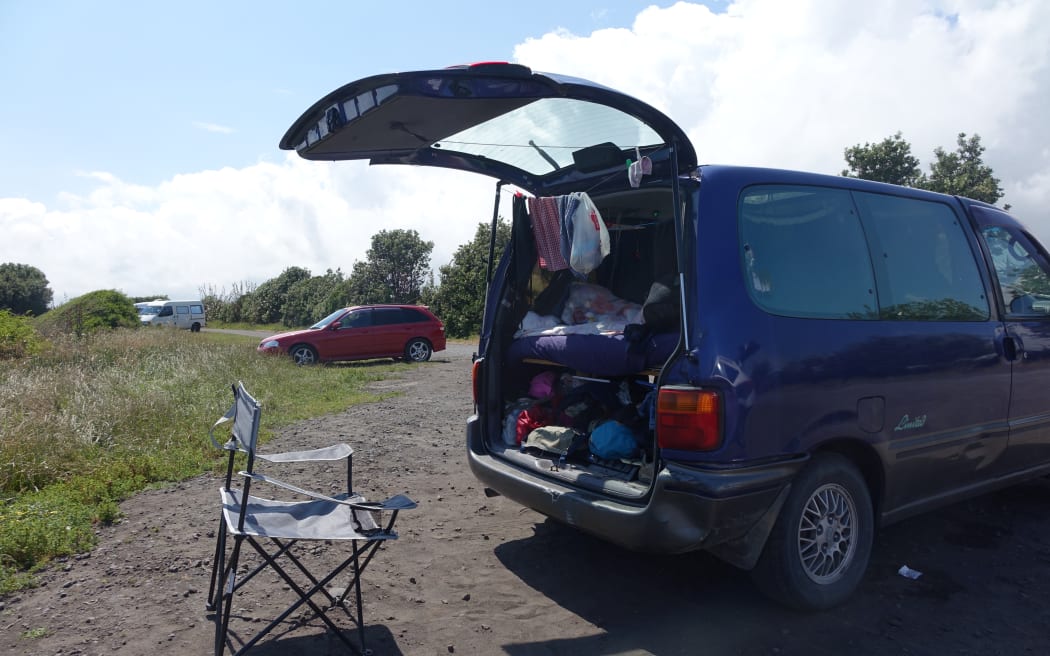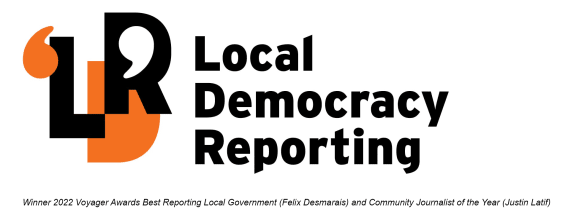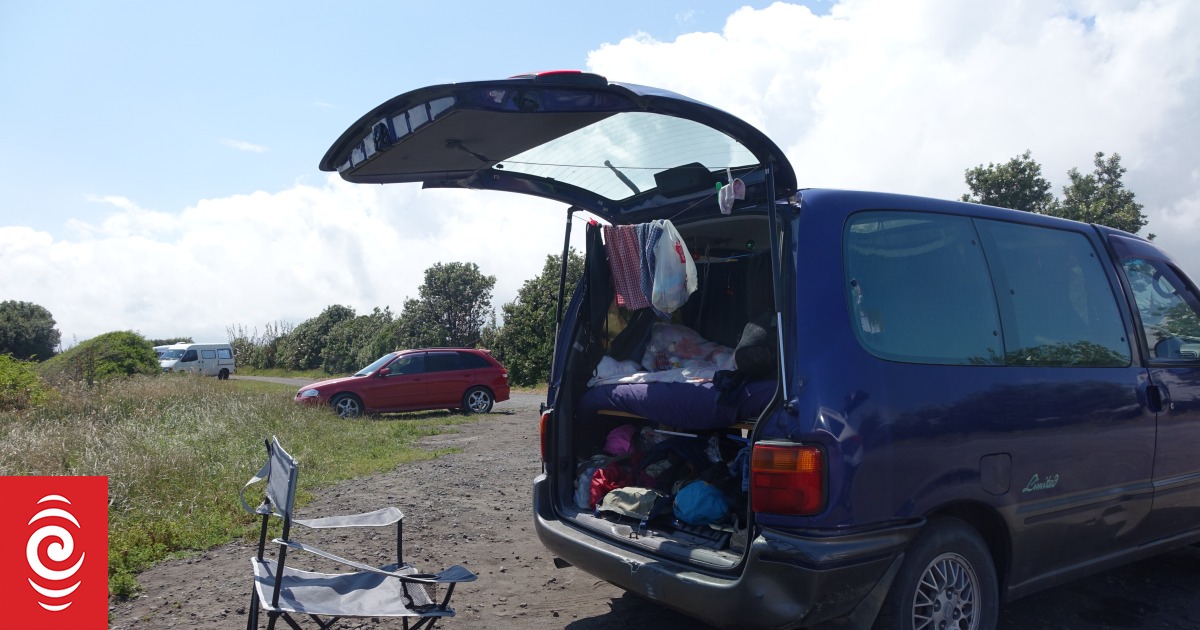
Photo: RNZ / Robin Martin
Northland councils are gearing up for Aotearoa’s peak freedom camping season as the country’s first summer in three years without Covid-19 travel restrictions arrives.
And those involved are not quite sure what to expect when it comes to numbers as a result of this new back-to-future but not as we know it.
Far North District Council (FNDC) general manager strategic planning and policy Roger Akers said it was “impossible to predict” Far North freedom camping demand.

“We are expecting a significant number of visitors this summer, some of (whom) will be freedom campers,” Akers said.
November visitors into Whangarei entrance’s Tarewa i-Site were up almost 70 percent on the same month last year. However, this also happened after the council’s Town Basin i-Site was closed in 2021.
International visitors were part of the visitor increase, Australians topping the list, followed by Germans and other Europeans, then Americans and Canadians.
Whangārei District Council (WDC) responsible freedom camping co-ordinator Sue Halliwell said her service was gearing up for moderate numbers but predictions on exactly what would unfold were difficult this year as there were so many variables and the situation could evolve differently.
Internationals had returned as borders opened for example, but this might not translate into more internationals returning to make up their share of Northland freedom campers, she said.
“International travellers are coming back into the country in large numbers, although with the government now targeting high end tourists in its advertising, those numbers may not necessarily include many freedom campers,” Halliwell said.
Kaipara District Council (KDC) monitoring and compliance services manager Dean Nuralli said his council had been keeping an eye on how freedom camping locally was going. He was expecting an increase in freedom campers this summer.
Nuralli said Kaipara’s location next to Auckland was a freedom camping influence.
“Kaipara district is the gateway to Northland and home to the spectacular Kauri Coast. We are on the doorstep of New Zealand’s largest domestic tourism market (Auckland) and an easy drive from New Zealand’s largest international airport. Freedom campers heading north from Auckland must pass through our district,” Nuralli said.
Northland’s freedom camping peak December to February season arrives as New Zealand’s school holidays start.
Domestic Kiwi holidaymakers typically arrive in Northland for the school holidays from December to January.
International freedom campers usually arrive between early November and the end of March. Grey nomads follow after that from February until the start of April.
WDC’s Halliwell said it was more difficult this year to forecast how that typical mix played out.
Whangārei has become most under-pressure freedom camping district in Northland.
Whangārei district’s freedom camping numbers climbed by almost 170 percent in just two years to 13,500 during Northland’s biggest 2019/2020 season – up from 5000 in 2017/2018.
The peak was the last season before Covid-19, international travel bans and lockdowns arrived in New Zealand in March 2020.
Whangārei had 8124 freedom campers in 2018/19. Covid arrived and numbers declined to 5548 for 2020/2021.
Figures for 2021/2022 were drastically down but there were no records kept due to the absence of council responsible freedom camping ambassadors that season.
Huge demand forced the early update of WDC Camping in Public Places Bylaw. Its updating came into force from October last year and worked to focus freedom camping across Whangārei district into 17 areas with a mix of self-contained only, or self-contained and non-self-contained.
It also saw overloaded Tūtūkākā coast freedom camping sites with first-time summer season freedom camping bans for Whangaumu/Wellington’s Bay, Kowharewa Bay, Matapōuri (Wehiwehi Rd), Sandy Bay and Woolleys Bay West. These were in force again this year, kicking off on 18 December and running until 8 February.
WDC’s eight-person peak season Whangārei freedom camping ambassador education programme started on 16 December and runs to 6 February across the district’s dozen busiest areas – Ruakākā (two sites), Marsden Bay, One Tree Point, Tarewa i-Site, Cobham Oval carpark, Bascule bridge carpark, Onerahi (Beach Road), Tamaterau, Pārua Bay, Reotahi and Ocean Beach (where freedom camping is again banned on the grass overflow carkpark).
Visits were also made to the summer season Onerahi and Tikipunga Sports Parks, open from 18 December until 30 January to provide freedom campers with an overnight base for day tripping.
WDC health and bylaws manager Reiner Mussle said the new bylaw amendments had worked well to provide clear guidelines for a range of circumstances with different camping forms.
Mussle said community and freedom camping sector involvement in the bylaw amendment consultation process had been a big plus.
He said members of the public who wished to make complaints about freedom camping could email WDC’s mailroom@wdc.govt.nz or phone 09 4304200.
The bylaw update saw freedom camping permanently banned at Whangārei city’s Reyburn/Finlayson House Lane carpark. New sites for fully self-contained vehicles are instead available at Hātea East carpark.
Mussle said there had been an increase in the number of Whangārei district’s homeless people and those living permanently in vehicles since the start of Covid-19.
“Council continues to work with social service agencies in an aim to find long term solutions to homelessness and working pragmatically with permanent vehicle dwellers with the aim of minimising their impact on freedom campers and the associated legislation,” Mussle said.
“Part of the work the new (Kaipara) ambassadors will do is collect more information about freedom camping and … where it’s focused in Kaipara,” KDC’s Nuralli said.
Kaipara’s major freedom camping spots are in the east around Mangawhai as well as in the west around Kai Iwi Lakes Taharoa Domain shoreline daytripping sites and Ripiro Beach around Baylys Beach and Glinks Gully.
Meawhile, in the Far North, FNDC has seven freedom camping sites at Kawakawa (Te Hononga Gillies St), Kaikohe (Lindvart Park), Ohaeawai (Te Corner), Okaihau (Two Ponga Park), Totara North (200 metres off State Highway one), Mangonui (Lions Park, Waterfront Drive) and Awanui (village toilets playground).
FNDC ‘s Akers said kaitiaki rangers would be doing surveys in their mahi around Far North tourism hotspots in preparation for council freedom camping policy updating.
Visitors were encouraged to camp in the FNDC’s seven approved freedom camping sites from Kawakawa to Awanui. These were close to public toilets and water supplies. Dump stations for self-contained campervans were available nearby.
New Zealand’s northernmost freedom camping dump station is the new facility at the Far North’s Te Paki Stream Road intersection with State Highway One heading north to Cape Reinga.
Local Democracy Reporting is Public Interest Journalism funded through NZ On Air




